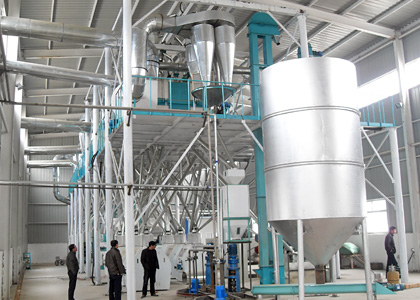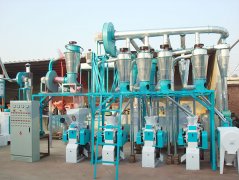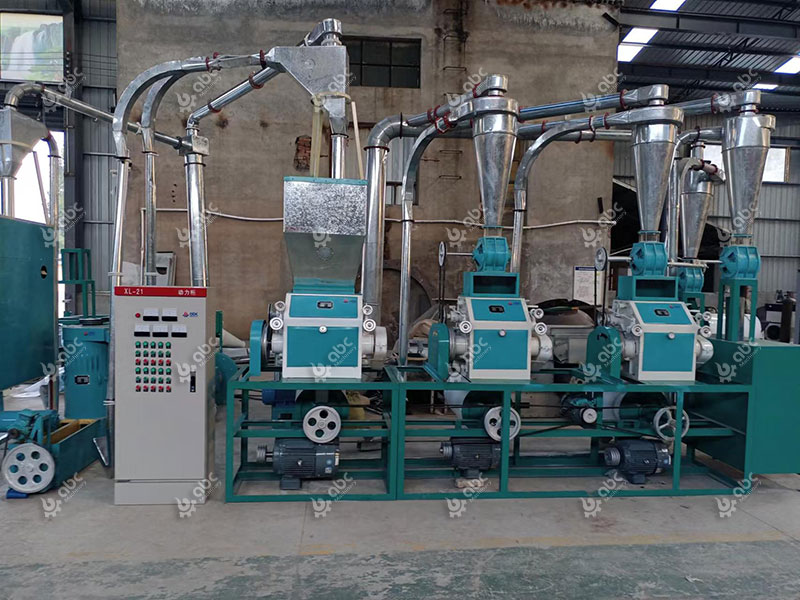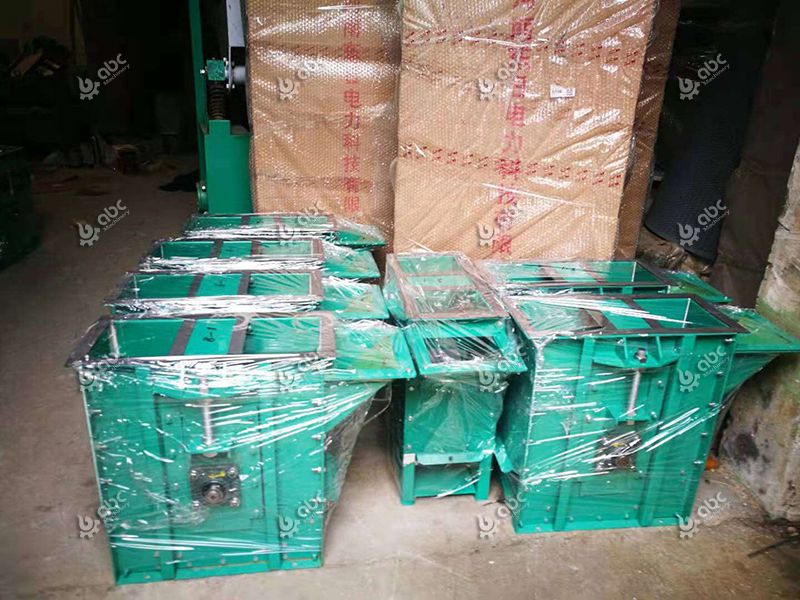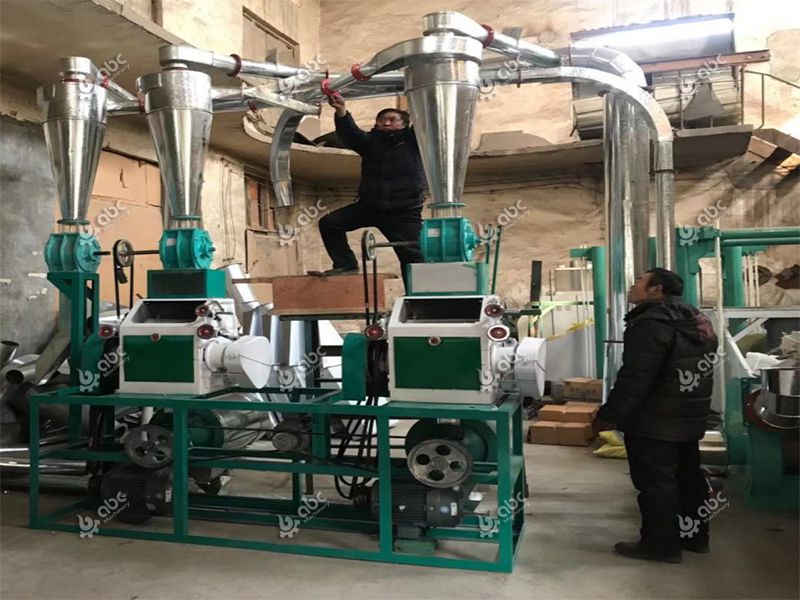Sorghum Flour Mills:Investment Strategies and Profit Models
As the global demand for gluten-free, drought-resistant, and nutrient-rich grains surges, sorghum has emerged as a star crop—driving interest in sorghum flour mills. But with diverse options in grain processing equipment, varying scales of flour mill plants, and evolving market needs, how can investors craft a winning strategy to launch or expand a sorghum flour mill business while securing steady profits?
This article, part of the Start Flour Mill Business Plan for Different Grains, breaks down core investment decisions, innovative profit models, and risk mitigation tactics to help you succeed in the sorghum processing industry.
What Are the Key Investment Pillars for Sorghum Flour Mills? From Scale to Equipment
Investing in a sorghum flour mill requires balancing upfront costs, equipment quality, and market alignment. Below are 3 non-negotiable pillars to guide your investment planning, with insights tailored to integrate sorghum-specific tools and align with broader grain milling best practices.
1. Scale Selection: Matching Your Investment to Market Demand
The size of your sorghum flour production line directly impacts costs, equipment needs, and revenue potential. Choose a scale that fits your budget and target audience:
-
Small-scale sorghum flour mill: Ideal for local markets, bakeries, or startup investors. Requires 5–20 tons/day capacity, with core equipment like a compact sorghum milling machine, basic grain cleaning tools, and manual packaging units. Initial investment ranges from $10,000–$50,000. Learn more about small-business setups through industry guides tailored to compact grain processing operations.
-
Medium-scale sorghum processing plant: Suits regional distribution, supplying food manufacturers or large retailers. Capacity 20–100 tons/day, needing automated sorghum processing equipment (e.g., continuous cleaning systems, industrial flour mill machinery, and semi-automated packaging lines). Investment: $50,000–$200,000.
-
Large-scale sorghum flour production line: For national or export markets, with 100+ tons/day capacity. Relies on high-end grain milling equipment, including computer-controlled sorghum milling machines, bulk storage systems, and integrated flour processing plant infrastructure. Investment exceeds $200,000.
2. Equipment Sourcing: Prioritizing Durability and Efficiency
Sorghum’s hard texture demands specialized grain processing equipment—cutting corners here can lead to costly downtime. Focus on these critical tools:
-
Pre-processing equipment: Sorghum cleaning machines (to remove dirt, stones, and impurities) and grain hullers (to separate sorghum kernels from outer layers).
-
Milling core: High-speed sorghum milling machines (with adjustable settings for fine/coarse flour) and flour sifters (to ensure uniform particle size).
-
Post-processing tools: Flour packaging machines (manual or automated), quality control devices (e.g., moisture meters), and waste recycling systems (to repurpose bran as animal feed).
Tip: Source from reputable suppliers that offer after-sales support—compare options for flour mill equipment through reputable industry directories to balance cost and quality.
3. Location & Infrastructure: Cutting Logistics Costs
Choose a site near sorghum-growing regions to reduce grain transportation expenses. Ensure access to:
-
Reliable electricity (for mill machines and flour production lines).
-
Water supply (for cleaning equipment and processing).
-
Transportation links (highways, ports for export-focused mills).
-
Compliance with local zoning laws for grain processing plants.
How Can You Diversify Profit Models for Sorghum Flour Mills?
Basic sorghum flour sales yield steady but limited profits. To boost margins, adopt innovative models that leverage sorghum’s versatility and align with trends like gluten-free and organic food. The table below compares top profit models, and we’ll dive deeper into key strategies.
|
Profit Model |
Revenue Source |
Average Profit Margin |
Target Customer |
Required Resources |
|---|---|---|---|---|
|
Basic Sorghum Flour Sales |
Standard white/brown sorghum flour |
10–15% |
Local retailers, small bakeries |
Basic sorghum milling machine, standard packaging |
|
Diversified Product Lines |
Gluten-free mixes, sorghum protein powder, flavored flour blends |
20–30% |
Health food brands, home bakers |
Additional mixing equipment, R&D for recipes |
|
Contract Milling Services |
Custom milling for farmers/cooperatives |
15–25% |
Local sorghum farmers, small grain mills |
Flexible sorghum processing machine, small-batch capacity |
|
Export to High-Demand Markets |
Certified organic/non-GMO sorghum flour |
25–35% |
European, U.S., or Asian importers |
Certification (USDA Organic), logistics partners |
Product Diversification: Tap into Niche Markets
Expand beyond plain sorghum flour to cater to specific consumer needs:
-
Gluten-free baking mixes: Combine sorghum flour with xanthan gum, sugar, and spices for ready-to-use cake, bread, or cookie mixes.
-
Nutrient-enhanced blends: Mix sorghum flour with wheat flour (for texture) or corn flour (for sweetness) to create hybrid products—leverage your existing wheat mill or corn mill for cross-production.
-
Specialty flours: Offer organic sorghum flour, stone-ground sorghum flour, or sorghum flour fortified with iron/folate for health-conscious buyers.
Contract Milling: Monetize Underutilized Capacity
Partner with local farmers or small grain mills that lack sorghum processing equipment:
-
Charge a per-ton fee to mill sorghum into flour for farmers (who sell directly to consumers).
-
Offer “co-packaging” services for small flour mill businesses that need help scaling production.
Export: Target Gluten-Free Hotspots
Regions like Europe, North America, and Japan have high demand for gluten-free sorghum products. To enter these markets:
-
Obtain certifications (e.g., USDA Organic, Non-GMO Project Verified).
-
Partner with export agents or use global trade platforms to connect with importers.
-
Reference regional business plans (e.g., those tailored to maize and wheat milling in Pakistan) to adapt strategies for export-focused operations.
What Risk Mitigation Tactics Ensure Long-Term Profitability for Sorghum Flour Mills?
Sorghum flour mill investments face risks—from volatile sorghum prices to equipment breakdowns. Below are actionable steps to protect your investment and sustain profits.
1. Supply Chain Risk: Secure Sorghum Sourcing
Sorghum prices fluctuate due to weather (droughts/floods) and global demand. Mitigate this by:
-
Signing long-term contracts with local sorghum farmers (lock in prices for 1–3 years).
-
Diversifying suppliers across 2–3 regions to avoid shortages from localized disasters.
-
Maintaining a 1–2 month reserve stock of sorghum to buffer price spikes.
2. Operational Risk: Optimize Equipment & Efficiency
Downtime from faulty grain processing equipment can erase profits. Prevent this by:
-
Scheduling regular maintenance for sorghum milling machines, flour mill machinery, and grain milling equipment (follow manufacturer guidelines).
-
Training staff to operate and troubleshoot equipment (partner with suppliers for training programs).
-
Investing in energy-efficient mill machines (e.g., solar-powered flour production lines) to reduce utility costs—see industry resources on small flour processing business optimization for cost-saving tips.
3. Market Risk: Stay Ahead of Trends
Consumer preferences shift—avoid obsolescence by:
-
Conducting annual market research (track demand for gluten-free, organic, or sustainable products).
-
Testing new products in small batches (e.g., sorghum flour pasta or snacks) before full-scale production.
-
Building brand loyalty through social media (showcase your sorghum processing plant’s sustainability practices, like waste reduction).
Ready to turn your sorghum mill investment into a profitable business? Use these resources to accelerate your plan:
-
Download a customizable sorghum flour project business plan (adapted from maize/wheat templates) through industry business plan repositories.
-
Get regional insights for high-growth markets: Nigeria and Pakistan via localized grain processing business guides.
-
Learn more about starting a flour mill for different grains (including sorghum) through comprehensive industry knowledge hubs.
With the right investment strategy, diversified profit models, and risk mitigation, sorghum flour mills can thrive in the growing grain processing industry. Wlecome to contact us for more information!


